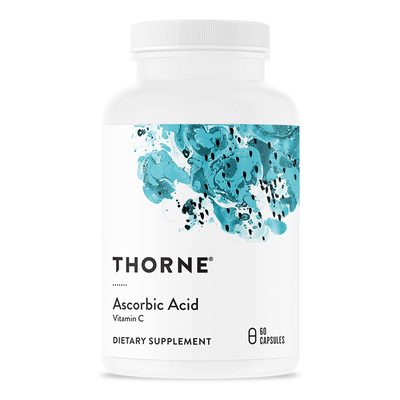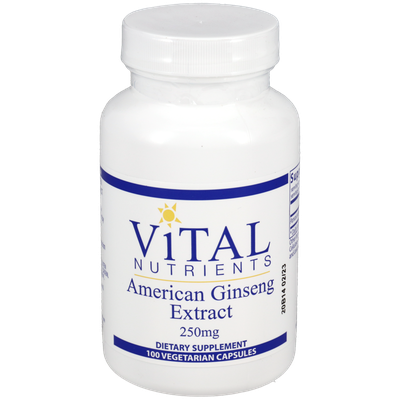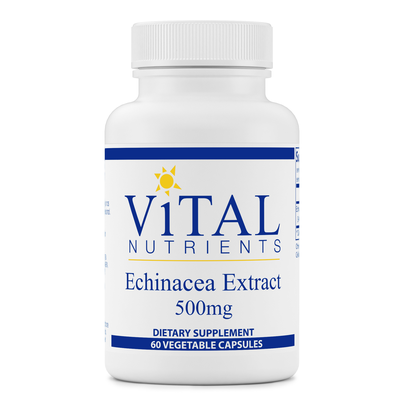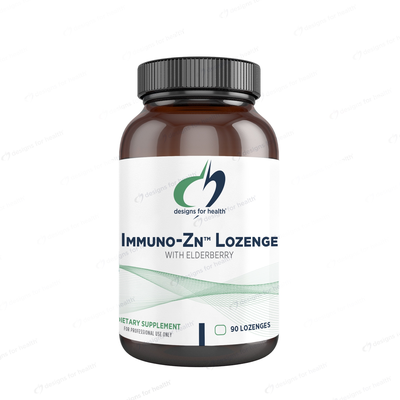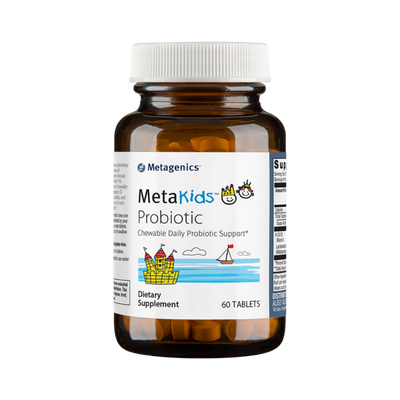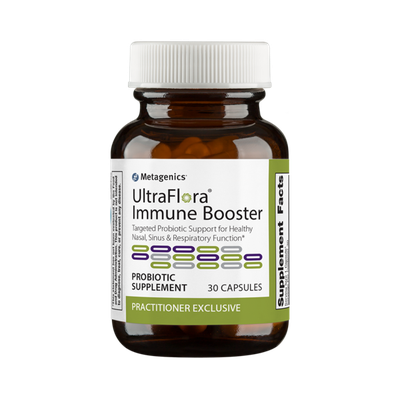MUSCLE3X
IMMUNE HEALTH KIT
IMMUNE HEALTH KIT
Couldn't load pickup availability
Overview
Seasonal occurrences of cold and flu are to be expected. Targeting the immune system during this time has the potential to help decrease the frequency, severity, or duration of cold and flu symptoms. Decreasing the risk of developing a cold or flu is possible through prophylactic supplementation, especially among high-risk populations, such as in children, the elderly, or those with compromised immune systems.
In the event a cold or flu does occur, the desired focus of supplementation may shift to decreasing the duration and severity of symptoms. Zinc may be considered in this case; when given during the initial 24 hours of symptom onset, it has been shown to reduce the number of patients with symptoms after one week. (Singh 2015) Vitamin C is another popular remedy to decrease the length of a cold and has the potential to decrease duration by approximately half a day. (Ran 2018)
The ingredients present in the protocol below reflect research findings that demonstrate efficacy when used prophylactically and therapeutically to support physiological immune function in regards to cold and flu.
Vitamin C
Vitamin C
Adults: 1 g daily as an ongoing maintenance dose, (Hemila 2013)(Johnstone 2014)(Ran 2018) or 3 to 4 g daily at the onset of symptoms and for the duration of illness (Hemila 2013)(Ran 2018)
Children: 1 to 2 g daily as an ongoing maintenance dose (Hemila 2013)
- Reduces the duration of the common cold by approximately a half-day, (Ran 2018) or by 8% in adults and by 14-18% in children (Hemila 2013)
- Reduces time of confinement by approximately six hours and fever duration by approximately a half-day, relieves chest pain and chills by approximately eight hours when given an extra therapeutic dose at the time of onset of cold (Ran 2018)
- Improves antimicrobial and natural killer (NK) cell activities, lymphocyte levels, chemotaxis, delayed T cell responses, sympathetic nervous response, and induces anti-reactive oxygen species activity (Ran 2018)
- Decreased duration of cold by 59% and increased weekly activity levels by 39.5% when compared to placebo in otherwise healthy adult males (Johnstone 2014)
Overview
Seasonal occurrences of cold and flu are to be expected. Targeting the immune system during this time has the potential to help decrease the frequency, severity, or duration of cold and flu symptoms. Decreasing the risk of developing a cold or flu is possible through prophylactic supplementation, especially among high-risk populations, such as in children, the elderly, or those with compromised immune systems.
In the event a cold or flu does occur, the desired focus of supplementation may shift to decreasing the duration and severity of symptoms. Zinc may be considered in this case; when given during the initial 24 hours of symptom onset, it has been shown to reduce the number of patients with symptoms after one week. (Singh 2015) Vitamin C is another popular remedy to decrease the length of a cold and has the potential to decrease duration by approximately half a day. (Ran 2018)
The ingredients present in the protocol below reflect research findings that demonstrate efficacy when used prophylactically and therapeutically to support physiological immune function in regards to cold and flu.
Vitamin C
Vitamin C
Adults: 1 g daily as an ongoing maintenance dose, (Hemila 2013)(Johnstone 2014)(Ran 2018) or 3 to 4 g daily at the onset of symptoms and for the duration of illness (Hemila 2013)(Ran 2018)
Children: 1 to 2 g daily as an ongoing maintenance dose (Hemila 2013)
- Reduces the duration of the common cold by approximately a half-day, (Ran 2018) or by 8% in adults and by 14-18% in children (Hemila 2013)
- Reduces time of confinement by approximately six hours and fever duration by approximately a half-day, relieves chest pain and chills by approximately eight hours when given an extra therapeutic dose at the time of onset of cold (Ran 2018)
- Improves antimicrobial and natural killer (NK) cell activities, lymphocyte levels, chemotaxis, delayed T cell responses, sympathetic nervous response, and induces anti-reactive oxygen species activity (Ran 2018)
- Decreased duration of cold by 59% and increased weekly activity levels by 39.5% when compared to placebo in otherwise healthy adult males (Johnstone 2014)
Echinacea purpurea
Echinacea purpurea
Prevention: 0.9 mL, three times per day (equivalent to 2400 mg of extract), minimum 4 months (Jawad 2012)
Acute: Up to 4.5 mL liquid extract (equivalent to 4000 mg), once per day at the first stage of cold development (Jawad 2012)
- Reduces the relative risk of cold development by 10-58% (Karsch-Völk 2014)(Schoop 2006)(Shah 2007)
- Reduces days with symptoms by 26% (1.4 days)(Jawad 2012)(Shah 2007) and symptom scores by 23% (Goel 2004)
- 52% fewer patients requiring concomitant use of aspirin, paracetamol, or ibuprofen (Jawad 2012)
- Reduces the incidence of cumulative viral infections by 26% and recurring infections by 59%, including influenza virus and parainfluenza virus (Jawad 2012)
- Increases associated counts for white blood cells, monocytes, neutrophils, and natural killer cells, and suppresses superoxide production in the later phase of the cold by neutrophils (Goel 2005)
Zinc
Zinc
75-100 mg of elemental zinc as zinc acetate or zinc gluconate lozenges, once per day, within 24 hours of the onset of common cold symptoms, minimum 1 to 2 weeks cold (Hemila 2017)(Hemila et al. 2017)(Hemila 2016)(Hemila 2015)(Singh 2015)
- Reduces cold duration by 33%, (Hemila 2017) or by approximately 1.65 to 3 days in healthy adults cold (Hemila et al. 2017)(Hemila 2016)(Prasad 2008)(Singh 2015)(Science 2012)
- Zinc acetate equivalently reduces the duration by 40% and zinc gluconate reduces the duration by 28%, (Hemila 2017) while other sources indicate greater efficacy with zinc acetate in healthy adults (Science 2012)
- Reduces the incidence of cold symptoms after 5-7 days in healthy adults and children (Hemila et al. 2017)(Singh 2015)
- Reduces the duration of muscle soreness by 54%, cough by 46%, voice hoarseness by 43%, nasal congestion by 37%, nasal discharge by 34%, scratchy throat by 33%, sneezing by 22%, and sore throat by 18% in healthy adults (Hemila 2015)(Prasad 2008)
- Reduces the incidence of common cold development, absence from school, and antibiotic use in children (Singh 2015)
- Improves anti-inflammatory and antioxidant profile via reductions in plasma interleukin-1 receptor antagonist (IL-1ra), intercellular adhesion molecule-1 (ICAM-1), TNF-ɑ, MDA, HAE, and 8-oHdG, and increases in IL-2 mRNA in mononuclear cells in healthy adults (Prasad 2008)(Prasad 2007)
- Reduces duration of symptoms particularly when given within the first 24 hours of symptom onset (Singh 2015)
Probiotics (Pediatric)
Probiotics (Pediatric)
Probiotics may reduce the incidence of colds with minor effects on prevention, as well as improve influenza vaccination efficacy for A/H1N1, A/H3N2, and B strains, but is dependent on strain and population. (Kang 2013)(Lei 2017)(Yeh 2018)
Common Cold
-
5 billion CFU of Lactobacillus acidophilus NCFM (ATCC 700396), twice per day, minimum 6 months (Leyer 2009)
- Reduces the incidence of fever by 53%, cough by 41%, and antibiotic use by 68%
- Reduces the duration of fever, coughing, and rhinorrhea by 32%
-
Reduces days absent from childcare by 32%
Influenza
-
10 billion CFU of Bifidobacterium animalis subs. lactis Bi-07 (ATCC PTA-4802) & Lactobacillus acidophilus NCFM (ATCC 700396), twice per day for 6 months (Leyer 2009)
- Reduces the incidence of fever by 73%, rhinorrhea by 73%, cough by 62%, and antibiotic use by 84%
- Reduces the duration of fever, coughing, and rhinorrhea by 48%
- Reduces days absent from childcare by 28%
-
Probiotics (Adult)
Probiotics (Adult)
Probiotics may reduce the incidence of colds with minor effects on prevention, as well as improve influenza vaccination efficacy for A/H1N1, A/H3N2, and B strains, but is dependent on strain and population. (Kang 2013)(Lei 2017)(Yeh 2018)
Common Cold
-
1 billion CFU of Lactobacillus paracasei 8700:2 (DSM 13434) & Lactobacillus plantarum HEAL 9 (DSM 15312), once per day for 3 months (Berggren 2011)
- Reduces the incidence of developing more than one common cold episode and number of days with a cold
- Reduces total symptom scores & pharyngeal symptoms of cold
- Reduces B lymphocyte proliferation
Influenza
-
10 billion CFU of Lactobacillus fermentum CECT5716, once per day for 2 weeks before influenza vaccination and two weeks after (Olivares 2007)
- Reduces the incidence of influenza 5-months after vaccination compared to vaccine alone
- Increases natural killer cells, T-helper response, and IgA levels
-
10 billion CFU of Lactobacillus rhamnosus GG, twice per day for 4 weeks after influenza vaccination (Davidson 2011)
- Increases seroprotection for the H3N2 strain during the supplementation period
-
500 mg of Saccharomyces cerevisiae (EpiCor®), once per day for 12 weeks (Moyad 2010)(Moyad 2008)
- Reduces the incidence of cold/flu symptoms with or without prior vaccination
- Reduces the duration of symptoms with prior vaccination
-
1 billion CFU of Lactobacillus paracasei 8700:2 (DSM 13434) & Lactobacillus plantarum HEAL 9 (DSM 15312), once per day for 3 months (Berggren 2011)
Share
